The Kubota B2601 is lauded for its strength and versatility in various tasks, from mowing to more complex agricultural duties. Its 26 horsepower, 3-cylinder diesel engine is a workhorse that handles a multitude of jobs effectively. However, even robust tractors like the B2601 are not immune to issues. From starting problems, which may stem from a weak battery or a faulty ignition switch, to dealing with a quick-tach loader that may be prone to leaks, the B2601 can experience challenges that can affect its performance.
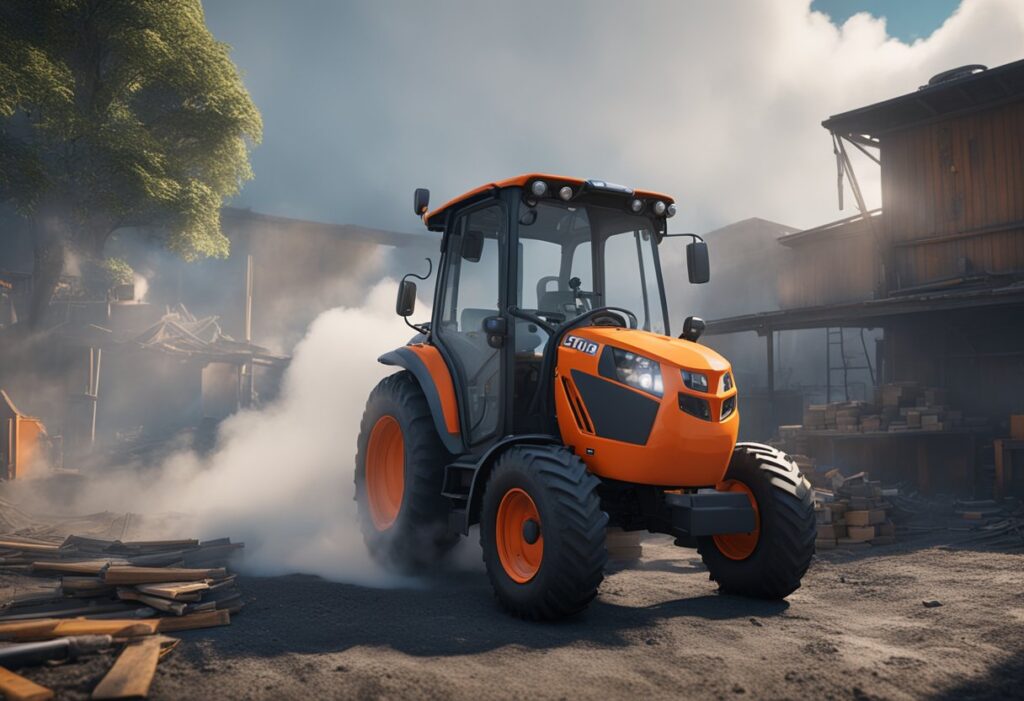
Addressing these common issues often requires understanding the underlying problem, whether it pertains to the engine, cooling system, or the hydraulic and transmission components. Knowledge of troubleshooting steps is invaluable for maintenance and ensures the longevity of the tractor. If you own a B2601 or are considering one, knowing the potential hitches and their solutions equips you to better manage your tractor’s upkeep, leaving you better prepared for any challenges that come your way.
Key Takeaways
- The Kubota B2601 is capable but may encounter operational issues.
- Starting and electrical problems are among the most noted issues.
- Regular maintenance and understanding common challenges are crucial to tractor care.
Overview of Kubota B2601
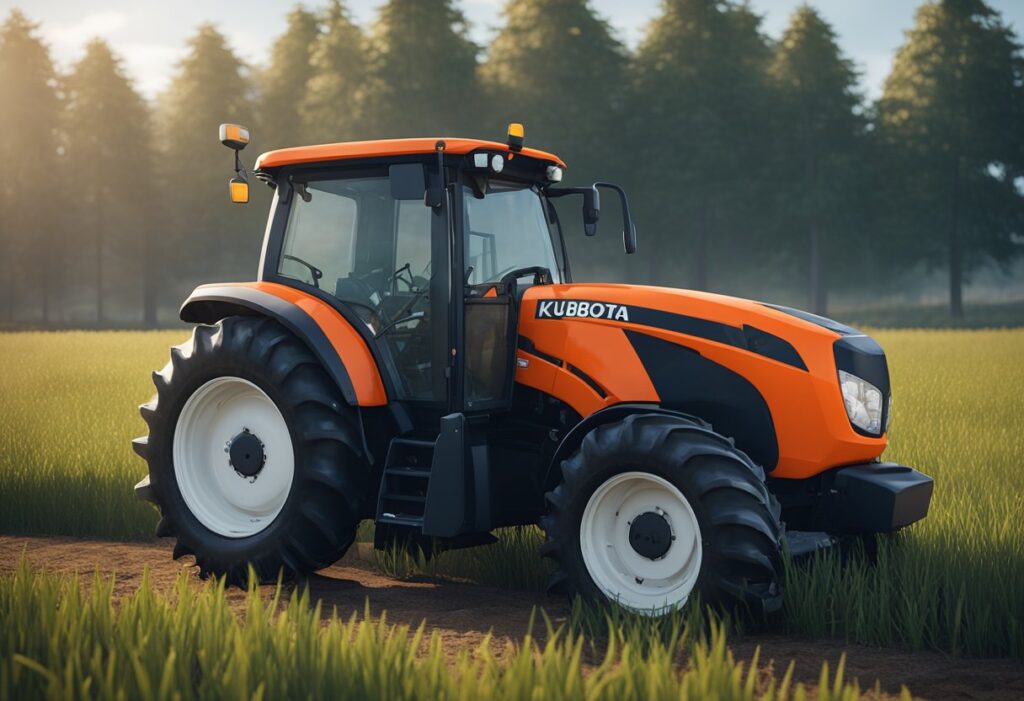
The Kubota B2601 is a noteworthy compact tractor in the market, known for its versatility and ability to tackle a variety of tasks. Your experience with this tractor hinges on understanding its design, specifications, and how it stacks up against its close cousin, the Kubota L2501.
Design and Specifications
Kubota has designed the B2601 with flexibility in mind. This compact tractor is equipped with a variety of features to cater to your operational needs. Let’s unpack what makes the B2601 a reliable choice:
Engine Power: A robust diesel engine powers your B2601, giving you the necessary strength for demanding tasks.
Weight: The B2601 remains relatively lightweight, enhancing maneuverability without compromising on performance.
Versatility: With a swift-tach loader, the B2601 excels in versatility, allowing you to quickly switch between tasks such as mowing and digging.
| Specification | Detail |
|---|---|
| Horsepower | 25.5 HP |
| PTO Horsepower | 19.5 HP |
| Cylinders | 3 |
| Operating Weight | Around 1,500 lbs |
Comparison With Kubota L2501
When weighing your options, it’s helpful to compare the B2601 to another popular model, the Kubota L2501.
Size and Power: The L2501 is slightly more powerful, which can be an advantage for larger projects, but the B2601 remains easier to navigate in smaller spaces due to its compact design.
Weight: While both tractors are designed to be user-friendly, the B2601 tends to be lighter, making it a nimble option for an array of applications.
Features: Both tractors are equipped with notable features, but the B2601’s ability to manage different attachments quickly gives it an edge in terms of efficiency and productivity for various tasks.
Understanding these key differences helps you discern which tractor aligns best with your specific demands, be it the B2601’s compact versatility or the more robust L2501.
Starting and Electrical Issues
When dealing with your Kubota B2601, it’s essential to understand common issues that could prevent it from starting. These often revolve around electrical components like the battery and ignition, as well as the broader electrical system.
Battery and Ignition Troubles
Battery Issues: The heart of your tractor’s starting system is the battery, and faults here can lead to starting problems. Verify the battery voltage; a reading below 12.6 volts could indicate a battery failure. Ensure connections are free from corrosion, as corroded connections can cause poor conductivity.
- Check battery terminals for tightness to avoid loose connections.
- For a non-starting engine, a simple fix might be replacing the battery if it’s depleted.
Ignition Switch Problems: If the battery is working but the tractor still won’t start, the issue might lie with the ignition switch.
- Inspect the wiring from the ignition switch to the relay module.
- A non-powered black/white wire to the solenoid when the ignition is turned could indicate a fault within the switch or related wiring.
Electrical System Concerns
An in-depth look into the tractor’s electrical system can unveil various issues like faulty wiring or blown fuses.
- Keep an eye on the main 50 amp fuse, as repeated blowing signals an electrical system failure.
- Investigate the wiring harness for signs of damage or wear which could cause short circuits or disconnects.
Connection Issues: It’s not uncommon for problems to arise from connections within the electrical system.
- Regularly inspect all connections for firmness to prevent issues related to loose connections.
- Ensure that there is no exposure to elements that could cause corrosion over time, as this can lead to intermittent or permanent electrical faults.
By keeping a keen eye on these components, you’ll be better positioned to maintain the starting and electrical systems of your Kubota B2601.
Engine and Cooling Problems
Your Kubota B2601 tractor is a powerhouse in compact form, but like any mechanical workhorse, it’s not without its engine and cooling system challenges. Addressing these can prevent performance hiccups and extend the life of your tractor.
Overheating Issues
Overheating is a common issue among diesel engines and the Kubota B2601 is no exception. Coolant is essential in controlling your engine temperature. Make sure to check your coolant levels regularly and look out for leaks. A malfunctioning radiator could also be the culprit, hindering the dissipation of heat. Also, verify the condition of your cooling fins and fan belt as damage to these parts can reduce their effectiveness, leading to an overheated engine.
Other Engine Malfunctions
Stalling or difficulty in starting may indicate a problem within the combustion chamber or with components like the spark plug. Regular checks are critical; for instance, a clogged fuel filter could restrict the flow of diesel, leading to stalling. Diesel engines require clear airways, so if your engine stalls, inspect the air filter as well. Oil quality is also pivotal; low or degraded oil can cause friction within the engine, exacerbating the risk of engine problems. Keep an eye out for these signs to maintain the smooth operation of your tractor’s engine.
Fuel and Air Intake Challenges
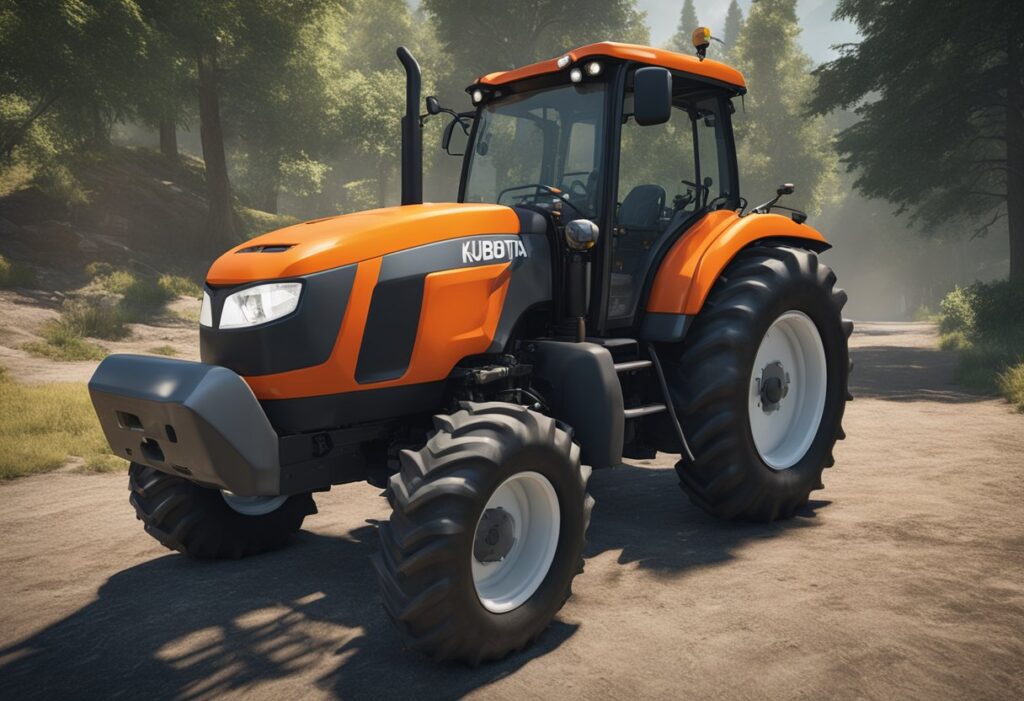
When maintaining your Kubota B2601, staying mindful of potential fuel and air intake issues can help circumvent common problems that impact performance.
Fuel System Defaults
Your Kubota B2601’s ability to function hinges on a reliable fuel system. A frequent issue is the fuel flow being compromised by clogged fuel filters. Signs of this include unexpected shutdowns and loss of power. It’s crucial to check if:
- The fuel filters are clean and unobstructed.
- There is no debris or clogs within the fuel hose.
- The quality of gas in your tractor hasn’t deteriorated, which can happen with old gasoline.
Address these promptly to ensure smooth operations.
Air Filter and Intake Obstructions
An equally important yet often overlooked component is the air intake filter. A clogged air filter can lead to:
- Inefficient engine performance.
- Excessive soot buildup, which can result in oil thickening and increased engine wear.
Make sure to inspect and clean or replace your air filter regularly to prevent such problems and maintain your tractor’s efficiency. This simple step is a potent safeguard against air-related engine issues.
Hydraulic and Transmission Complexities
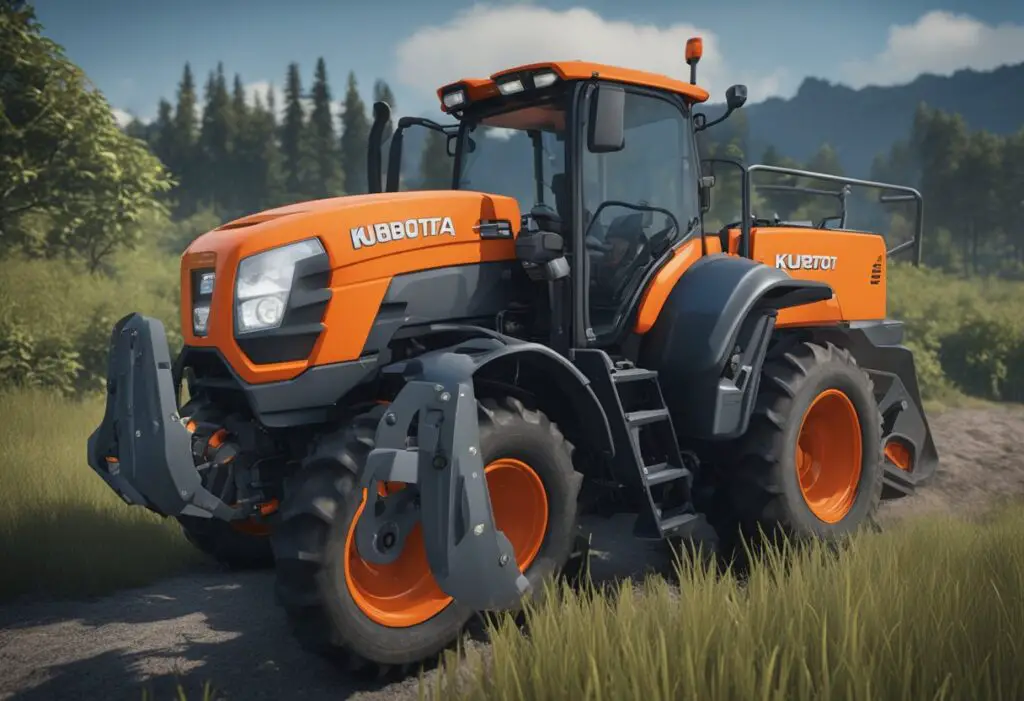
As you maintain your Kubota B2601 tractor, you’ll find that the hydraulic and transmission systems are vital for smooth operation. Keeping an eye on these can prevent major problems and ensure your tractor runs efficiently.
Hydraulic System Troubles
Your tractor’s hydraulic system is essential for tasks such as lifting and mowing, but it can be prone to certain issues. Pay attention to any leaks—these can occur in hoses, fittings, or seals. To prevent damage, regularly check that all seals are intact and that hose fittings are secure. Hydraulic fluid levels should be monitored closely; if you notice that the levels drop faster than normal, it may indicate a leak. Additionally, if your tractor’s movements become erratic, it might be due to air in the system—a condition that requires prompt purging of the air to restore proper hydraulic function.
Transmission and Treadle Pedal Issues
The hydrostatic transmission in your Kubota B2601 is generally reliable, but you may experience some challenges. If you hear unusual noises or feel vibrations, these could be signs of transmission issues that might require professional assessment. The treadle pedal, which you use to control speed and direction, should move smoothly. If it becomes stiff or unresponsive, it could be a sign of wear or a need for lubrication. Regular maintenance is key to ensure your pedal operates as intended, making for a more comfortable and controlled driving experience.
Attachable Implement Difficulties
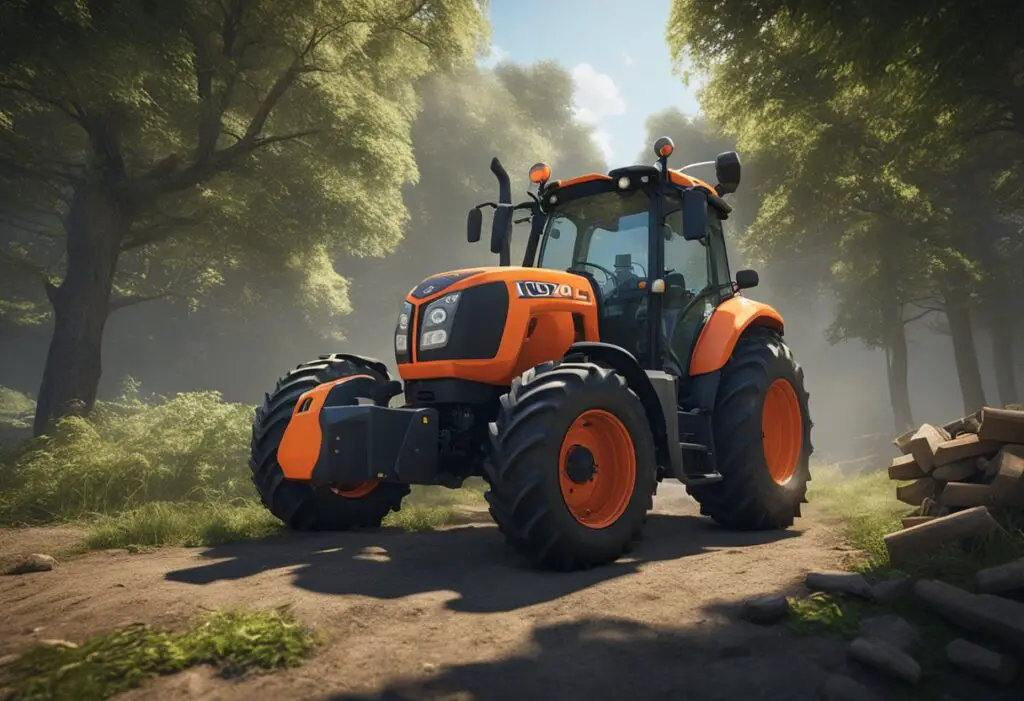
When working with your Kubota B2601, you may encounter issues with attachable implements like the quick tach loader and backhoe. Proper fitment and operation can be challenging, but awareness and troubleshooting can reduce downtime.
Quick Tach Loader Complications
The Quick Tach Loader (QTL), or front end loader (FEL), can sometimes cause frustration. Issues typically manifest in:
- Attachment/Detachment: If you’re having trouble with attaching or detaching the loader, ensure that the connection points are clean and not obstructed.
- Operation: Difficulty with the loader’s operation can often be traced back to hydraulic problems or incorrect pressure settings.
Check the following:
- Hydraulic fluid levels and quality
- Loader arm and pivot pins for proper lubrication
Backhoe and Mower Deck Setbacks
Backhoe attachments and the mid-mount mower (MMM) can also be sources of difficulty:
Backhoe: Problems may arise from improper fitment to the tractor or hydraulic issues. Ensure that:
- All pins and mounts align correctly.
- Hydraulic lines are clear of blockages and leaks.
Mower Deck (MMM): Challenges with the mower deck often center around leveling and belt tension issues. Quick tips include:
- Inspect the mower deck for proper height adjustment.
- Check the belts for correct tension and wear.
Remember to consult your operator’s manual for specific attachment procedures and maintenance schedules to keep your attachments working smoothly.
Maintenance and Upkeep Advice

Keeping your Kubota B2601 tractor in prime condition requires a proactive approach to maintenance and a keen eye for troubleshooting. Here’s how you can ensure your tractor remains reliable and ready for work.
Regular Service and Check-Ups
Routine Maintenance: To prevent common problems, stick to a regimented service schedule for your Kubota tractor. At regular intervals, ensure that oil changes, filter replacements, and general inspections are performed.
- Check the coolant level frequently and look for any leaks.
- Inspect hoses and belts for signs of wear and replace them as needed.
Service Log: Maintain a detailed service log to track all maintenance tasks. This will help you identify patterns and preempt potential issues.
Solving Common Problems
Overheating: If your tractor overheats, ensure the radiator is clean and the coolant is at an appropriate level. The solution could be as simple as removing debris from the radiator or topping off the coolant.
- Regularly clean the radiator fins to prevent blockages.
- Check for and repair any coolant leaks promptly.
Starting Issues: Before turning to complicated diagnostics, check the battery condition and connections for corrosion. A problematic start might be fixed by cleaning terminals or charging the battery.
Fuel Pump Problems: If you suspect fuel delivery issues, check the fuel lines for blockages and ensure the pump is in working order.
DIY Diagnostics and Fixes
Diagnose with Care: When diagnosing issues with your tractor, rely on the Kubota B2601’s user manual for accurate information on troubleshooting methods. Use a systematic approach to testing different functions.
Basic Fixes: Many problems, such as replacing worn belts or cleaning out blocked filters, can be handled on your own with the right tools and a bit of patience.
- Filters: Check and clean air and fuel filters to prevent engine malfunctions.
- Battery Maintenance: Test your battery’s charge and clean terminals to avoid starting issues.
Remember, keeping up with regular service and addressing problems as they arise can greatly extend the life and performance of your Kubota B2601 tractor.
Additional Considerations
When operating your Kubota B2601, it’s important to stay vigilant about maintenance and safety practices. Implementing these precautions will ensure a smoother and safer experience for both homeowners and farmers alike.
Operational Safety Precautions
Your Kubota tractor is equipped with various safety features designed to protect you during use. Always check the parking brakes and safety switches before starting the engine. These components are crucial for preventing accidents and must be in proper working order. Regular inspections of belts and fluids can preempt issues that may lead to breakdowns or unsafe conditions. Make sure that the steering fluid is at the correct level and that the steering system is responsive.
Handling Tires and Lubrication
Managing your tractor’s tires and lubrication extends its lifespan and optimizes performance.
Tires: Maintain proper tire pressure according to the manufacturer’s specifications. Wrong pressure can lead to uneven wear or even tractor instability which can be dangerous while operating.
Lubrication: Consistent lubrication is key for the moving parts of your tractor. Utilize the recommended lubricant to ensure that parts like the PTO shaft and joints remain in good condition. A lack of lubrication can lead to friction, causing parts to wear down prematurely or even fail, which can be both inefficient and hazardous. It is as important to avoid over-lubrication as it is to prevent under-lubrication to reduce the risk of attracting dirt and debris which can cause a build-up.
Checking the gasket for leaks is essential as well. Leaking fluids not only cause operational issues but can also lead to dangerous situations if not addressed promptly.
Frequently Asked Questions
This section aims to provide you with concise answers to some of the common questions you might have about the Kubota B2601 tractor.
What common issues do owners report regarding the Kubota B2601?
Owners have reported issues such as overheating, stalling, and starting problems. Some face challenges with excessive soot buildup in the engine, which can affect the tractor’s operation.
How does the Kubota B2601’s performance compare to similar models from John Deere?
The Kubota B2601 is regarded for its durability and versatility, often compared favorably to similar models from John Deere in terms of reliability and maintenance costs. However, actual performance can vary based on specific model comparisons and usage.
Can you list some troubleshooting tips for the engine of a Kubota B2601?
For engine issues, check the spark plug and fuel quality; replace the filter if needed. If you experience poor performance, make sure you’re not using fuel that’s older than 30 days, and confirm that the battery is not faulty.
What are the lift capacity specifications for the Kubota B2601?
The Kubota B2601 has a lifting capacity that generally satisfies standard tasks for small farms or homesteads. You should refer to your model’s specific manual for precise lift capacities as these figures can depend on the attachments and the specific configuration of your tractor.
How are the Kubota B2301 and B2601 models different from each other?
The Kubota B2301 and B2601 differ mainly in engine power, with the B2601 being more powerful. Additionally, there may be variations in their weight and size, with the B2601 typically being slightly larger.
Where can I find genuine reviews about the Kubota B2601?
Genuine reviews can be found on farming forums, verified purchase reviews on dealer websites, and dedicated farming equipment review sites. Personal testimonials from current users can also offer valuable insights.

Leave a Reply